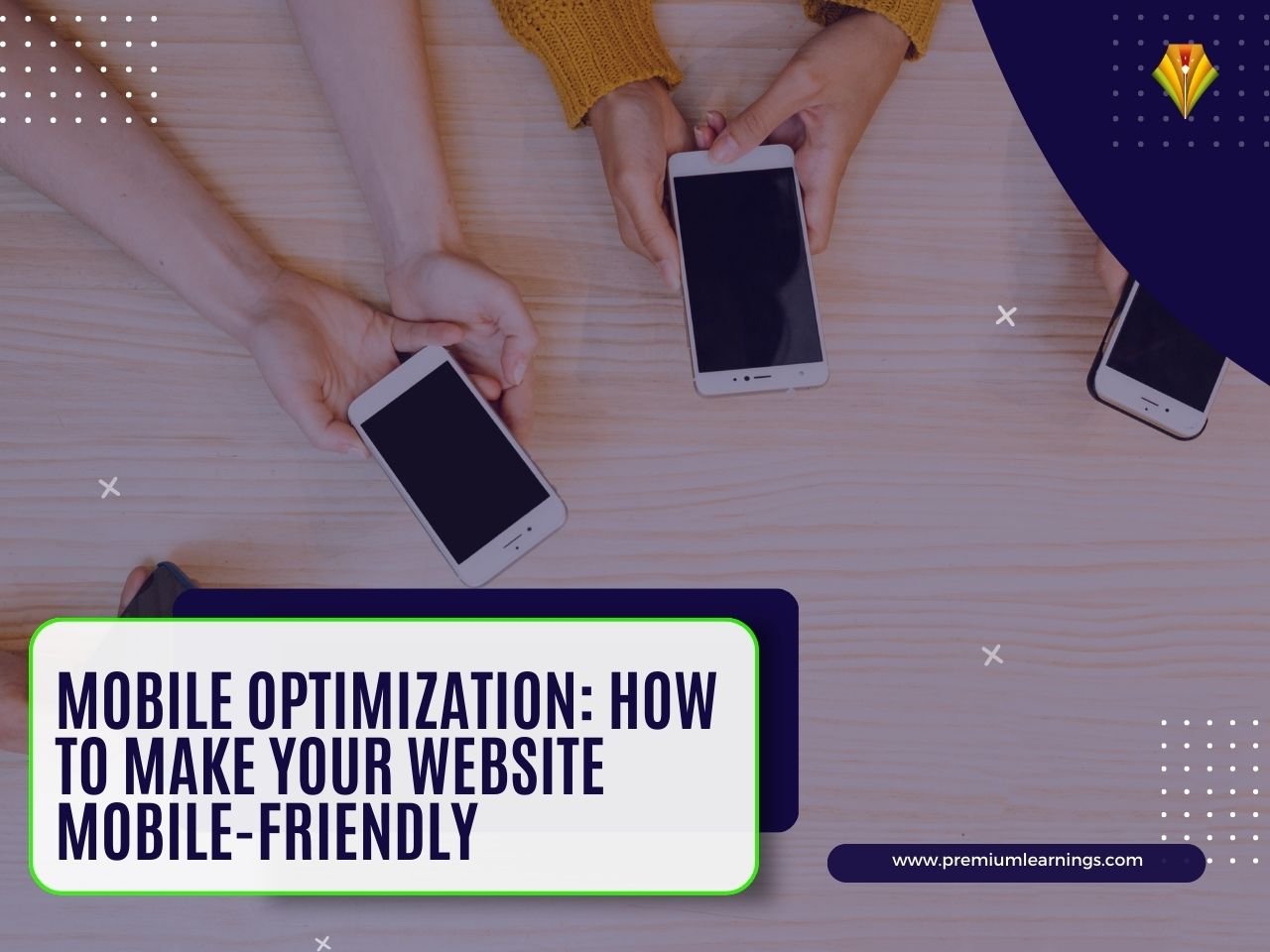With the rise in mobile usage, Mobile Optimization is Important in today’s era. When a website is mobile optimised, it means that it has been made to be easily navigable and user-friendly on devices with smaller screens, like smartphones and tablets. This blog post will walk you through the process of making your website mobile-friendly.
Use a responsive design to make sure that your website will work on any screen resolution, including desktop, tablet, and smartphone ones. Accordingly, your website will automatically resize itself to fit the size of the user’s device, making it simpler for visitors to access and read your content.
Simplify your design: Because of the smaller screens on mobile devices, it’s crucial to optimise your design so that users can read and navigate it more easily. Use a simple and straightforward layout with bigger text and easy-to-tap buttons on a touchpad.
Improve your image quality because big images take longer to load on mobile devices. To make sure your website loads quickly, optimise your images by using smaller file sizes and compression.
Use mobile-friendly fonts: Because some fonts are difficult to read on smaller screens, it is critical to use font style that are easily readable on mobile devices. Use easy-to-read fonts that are straightforward and clear at all sizes of the screen.
Test your website on portable devices: To make sure your website looks and functions properly on a range of mobile devices, it’s important to verify it on these devices. To see how your website performs on different devices, use tools like Google’s Mobile-Friendly Test.
Reduce the use of pop-ups: Pop-ups can be irritating for mobile users, particularly if they are difficult to close. Reduce the frequency of pop-ups or make sure they are simple to dismiss on mobile devices.
Optimize your page load speed: Because mobile users expect quick load times, it’s critical to optimise your page speed. To find areas where your website’s speed can be improved, use tools like PageSpeed Insights from Google.
Make use of a mobile-friendly menu: A device menu should be simple to access and browse, with straightforward labels that help users find what it is they’re looking for.
To summarise, mobile optimization is critical for any website that wishes to offer a pleasant browsing experience for mobile subscribers. You can build an online presence that is easily available and user-friendly on any device by using a responsive design, trying to simplify your design, optimising your photos and fonts, checking your webpage on mobile devices, minimising the use of pop-ups, optimising your page load speed, and including a mobile-friendly menu. You can make sure that your site is mobile-friendly and enhance the entire user experience by following these tips.
Keep Learning :
To enhance your knowledge consider attending our Growth Hacking Sessions. Register for the webinar now by clicking on the link below.
https://premiumlearnings.com/contact/
You can also download premium learning’s app from the link below
https://play.google.com/store/apps/details?id=com.premiumlearnings.learn&hl=en


